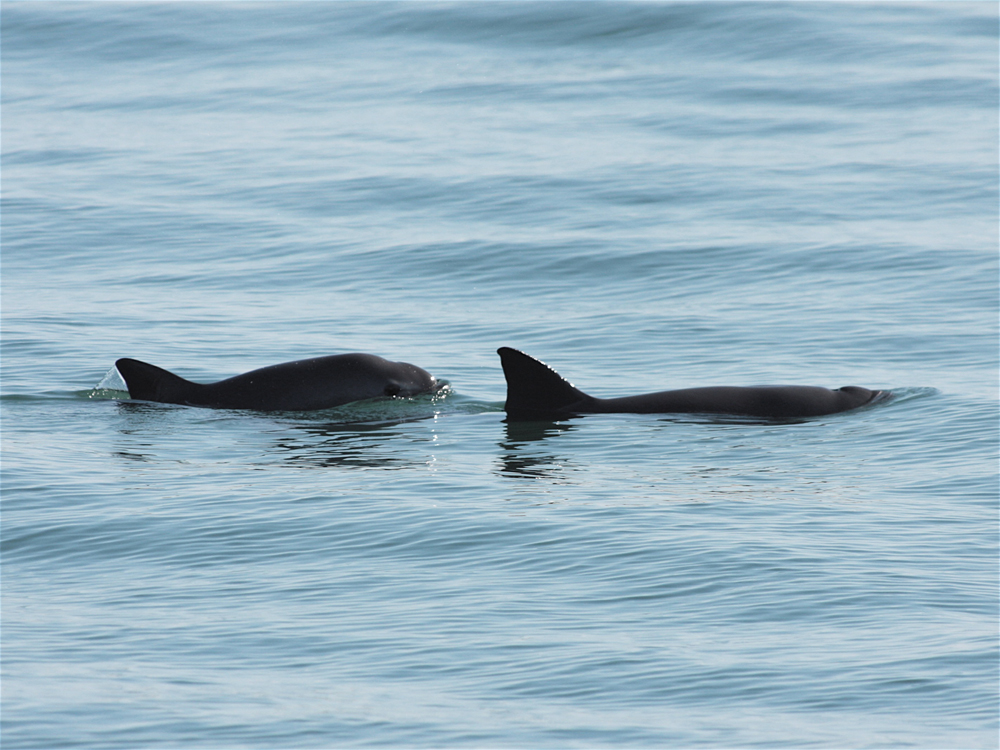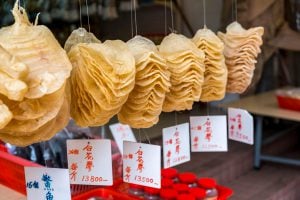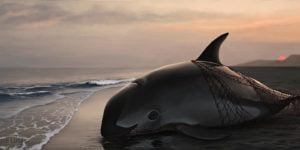The vaquita, a species of porpoise unique to Mexico’s Gulf of California, is on the verge of extinction.
Numbers of vaquita are declining rapidly as a result of a booming illegal trade in totoaba fish, a protected species which inhabits the same waters and whose dried swim bladders (known as maw) are believed have medicinal qualities. The vaquita, which is frequent by-catch in the gillnets of fishermen seeking totoaba, now numbers fewer than 60, according to a new report by the Environmental Investigation Agency (EIA).
Although trade in totoaba has been banned since 1977, it is still sold illegally in Hong Kong and southern China where maw is used as treatment for skin conditions and circulatory problems. One fish can cost up to US$ 50,000. EIA investigators posed as buyers of totoaba maw for the report entitled Collateral Damage, finding a vibrant trade at markets in Shantou, Hong Kong, Shenzhen and Guangzhou.
“There have been significant efforts to crack down on illegal fishing for totoaba and remove gillnets from the range of the vaquita,” said Clare Perry, head of EIA’s oceans campaign, but added that saving the porpoise requires coordinated international action to eliminate the illegal trade in totoaba – especially in China, its main consumer market. Mexico and the US are important actors as transit countries for the totoaba trade, the report’s authors said.
The report comes as the annual conference of the Convention on International Trade in Endangered Species (CITES) is set to take place on September 24 in Johannesburg, South Africa, which presents an opportunity to strengthen international cooperation for vaquita and totoaba conservation.
Collateral Damage from EIA on Vimeo.
Exclusion zones
EIA provides a list of recommendations to improve the protection of the vaquita and totaba, which includes closer surveillance of seafood markets in provinces known to trade totoaba such as Guandong, southern China, as well as training customs officials to identify totoaba maw.
However, it notes that actions such as introducing gillnet exclusion zones must be extended to include boats fishing for corvina, a fish commonly used in South American cuisine, which the report says is used as a cover for totoaba hunters.
According to the Mexican government, corvina fishing does not pose a direct threat to either the totoaba or the vaquita, as long as the nets are used correctly.
The EIA also argues that conservation of the vaquita and totoaba depends on creating better awareness amongst consumers of fish maw on the threats to the species that their demand represents. The bahaba, a fish found within Chinese waters which is also believed to have medicinal properties, has practically disappeared due to overfishing.
As a result, demand for the totoaba has surged while its numbers, and those of Mexico’s rare indigenous porpoise, have sunk to unprecedented lows.







